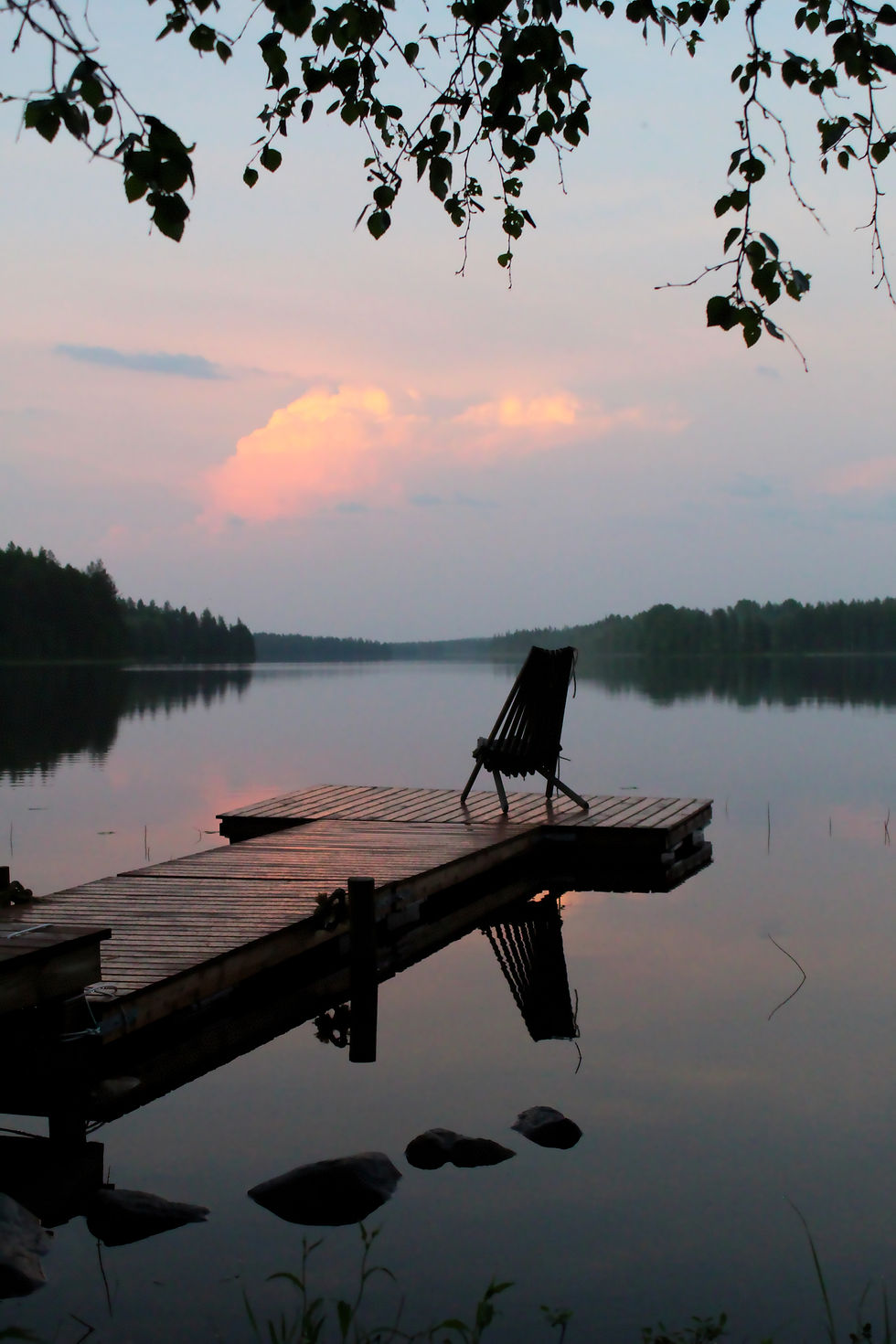Slow Living in a Fast World: Practical Habits That Create Calm
- Todd Rowley

- Oct 22
- 5 min read
Does your world move at the speed of a swipe? Emails, notifications, errands, social media scrolls—it’s a blur. Life races by, and somewhere in the noise, we start to feel disconnected from the quiet pulse of our own days.

But there’s another rhythm available to us. One that hums beneath the surface of hurry. One that invites us to breathe, notice, and live with intention. That rhythm is slow living.
Slow living isn’t about doing everything slowly. Instead, it’s about doing the right things deliberately. It’s about reclaiming your time and attention, so your days aren’t just filled, but felt.
And here’s the best part: you don’t have to move to a cabin in the woods or quit your job to live slowly. You can begin right where you are—with small, grounding habits that create calm in the chaos.
Here are seven simple habits that invite a slower, more meaningful way of life.
1. Begin Your Day Without a Screen
The first few minutes of the day are powerful. They set the tone for everything that
follows. Yet for most of us, the day begins with a quick scroll—checking messages, headlines, or notifications before we’ve even taken a breath.
Try this instead: give yourself a “tech-free ten.”
No phone. No screens. No news. Just you and the morning.

Use those ten minutes to stretch, breathe, make your bed, sip water, pray, write a few thoughts in a journal, or simply look out the window and notice the light. Take it a step further and set the foundation to your day with an affirmation such as "Today, I will meet resistance and that's not a problem!" or "Today, I am grateful for all that I have," or "This is the day that the Lord has made! I will rejoice and be glad in it."
This small boundary between you and your screen gives your mind a moment to settle before the world starts demanding your attention.
“The morning is when I am awake and there is a dawn in me.” – Henry David Thoreau
2. Create a Mini Ritual of Pause
We often think we don’t have time to slow down, but what if we redefined what “slowing down” looks like?
A slow moment doesn’t need to be an hour-long meditation. It can be a two-minute pause between tasks. Try this:
When you finish a meeting or email, close your eyes and take three slow breaths.
Before you start cooking dinner, light a candle or put on calming music.
At the end of the workday, step outside and feel the air on your face.
These tiny rituals serve as gentle reminders to return to yourself—to breathe before moving on to the next thing.
Over time, these pauses teach your body that it doesn’t always need to be in motion to be productive.
3. Eat Without Distraction
How often do we truly taste our food? Slow living invites us to reconnect with the simple act of eating without multitasking or scrolling, just eating.
Try to have one meal a day without screens, background noise, or rush. Sit down. Take a deep breath before your first bite. Notice the colours, textures, and aromas. Chew slowly.
When you eat with presence, meals become moments of mindfulness, gratitude, and grounding.
This small shift can improve digestion, deepen gratitude, and even help you reconnect with the people you’re eating with.
4. Walk Without a Destination

Walking is one of the most underrated forms of meditation.
We’re used to walking to somewhere—getting the mail, going to the store, fitting in a quick workout. But what if you walked for the sake of walking?
Take a slow, unhurried walk once a week. No phone, no podcast, no step goal. Just walk. Let your senses wake up to what’s around you: the sound of leaves, the rhythm of your breath, the feel of the ground beneath your feet.
This simple act of moving without purpose can become a powerful reset button for your nervous system.
“All truly great thoughts are conceived while walking.” – Friedrich Nietzsche
5. Simplify Your Spaces
Our environment shapes our state of mind. Cluttered spaces often lead to cluttered thoughts.
Start small: choose one corner, drawer, or countertop. Clear it. Wipe it down. Keep only what brings function or joy. Eliminate ruthlessly.
This isn’t about having a perfect minimalist home, but rather about creating pockets of peace in the spaces you use most.
Imagine opening your kitchen drawer to find exactly what you need, or sitting at your desk with no visual distractions. Those tiny changes invite calm every single day.
If you want to go deeper, try the “one in, one out” rule: for every new item that enters your home, one old item leaves.
6. Reclaim White Space in Your Schedule
Busyness has become a badge of honour. We often feel guilty for doing nothing, but “nothing” is where creativity and peace live.
Look at your week and intentionally leave space between commitments. Don’t fill every gap. Protect at least one evening a week as “unscheduled.”
That white space isn’t wasted time. It’s where ideas emerge, rest happens, and your spirit resets.
Slow living isn’t about escaping responsibilities—it’s about designing your days so that there’s room to live them.
7. End the Day in Stillness

We rush through our days and often collapse into bed exhausted. But even five quiet minutes before sleep can shift the energy of your entire night.
Try a bedtime ritual that signals to your body it’s time to rest:
Dim the lights 30 minutes before bed.
Write down three things you’re grateful for.
Read a few pages of a book (the kind made of paper).
Breathe deeply, pray, or reflect on one good moment from the day.
When you close your day with stillness, you’re reminding yourself that peace is something you can create—not just stumble into when the world slows down.
Living Slowly Is an Act of Courage
In a culture that glorifies speed, slowing down can feel countercultural or even rebellious. But living slowly isn’t about resisting modern life; it’s about reclaiming it.
It’s about choosing presence over productivity, depth over distraction, and quality over quantity.
Slow living teaches us that life’s beauty doesn’t exist in the big, loud moments, but in the quiet ones we almost overlook.
The morning light.
The sound of rain.
A deep breath between tasks.
The magic of life is still there, waiting for us to notice.
So start small. Pick one habit. Practice it daily until it becomes second nature. Then add another.
Slow living isn’t about perfection. It’s about curiosity—the curiosity to ask: What if I didn’t rush? What if I made space for wonder? What if I could live with less hurry and more contentment?

Some of the links above are affiliate links. This means that, at zero cost to you,
I will earn an affiliate commission if you click through the link and finalize a purchase.









Comments